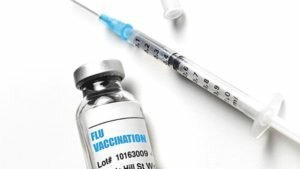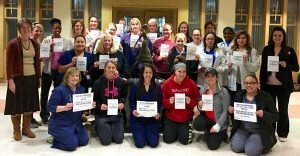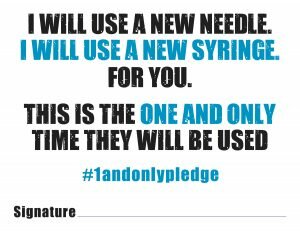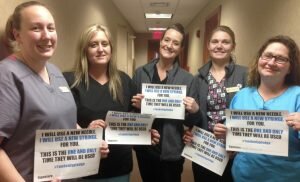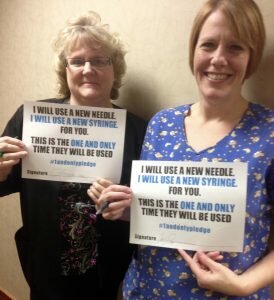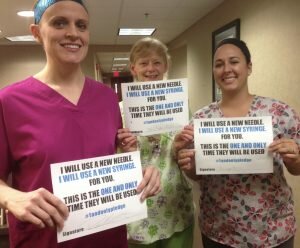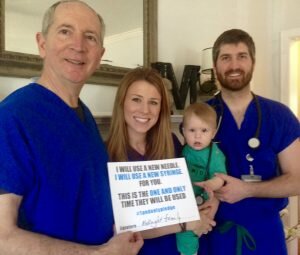Asking your support for HONOReform

Thank you for your interest in the work of HONOReform – the only organization dedicated to advancing injection safety. I am asking today for your support of our life-saving work.
Why do we advocate for injection safety?
You will be interested in this story about what happened in my family practice clinic recently that illustrates why we must – together – continue educating healthcare providers and patients about the critical need for injection safety.
My clinic scheduled an assessment by the CDC Nebraska Infection Control Assessment program team. These hard-working nurses and infection preventionists spent a day assessing our clinic’s policies and procedures, making sure that we are doing everything we can to prevent our patients from contracting disease while in our office.
At the end of the day, the assessment team sat down with us to give us their report. Fortunately, we are doing most things right.
But there was one thing that needed improvement. The team found an opened, unlabeled vial of lidocaine in a patient care area. Since the vial had not been disposed of properly, there was a risk that it could be reused improperly, potentially spreading disease.
How do we advance injection safety?
You probaby know that my wife contracted Hepatitis C through unsafe injection practices sixteen years ago. Since then, it is my personal crusade to educate about injection safety. I preach to doctors, nurses and medical students that it is never okay to reuse syringes, needles, medication vials or other medical equipment intended for one time use. But despite my efforts, an unsafe injection could have taken place, even in my own office. In 2016, HONOReform gave educational presentations to 2208 people as well as reaching thousands through social media and virtual audiences. Everyone who has been touched by the retelling of our story joins me in thanking you for your generous partnership and support. We are committed to educating about and advocating for injection safety with every possible opportunity, to keep you and your family safe when you access healthcare.
But even with all our efforts to educate about injection safety, there were eight outbreak investigations of disease transmission through unsafe injection practices in 2016, affecting thousands of Americans! Together we must work even harder to advance injection safety.
Here is how you can spread the word about injection safety
Talk to your healthcare providers about how they are keeping you safe through careful adherence to injection safety guidelines. Pass along HONOReform’s eagerness to provider a quality educational presentation to their professional organization. Here is a useful link: HONOReform’s educational presentation program.

Today I am asking for your support for HONOReform. Your contributions enable HONOReform to educate about the absoulte necessity of injection safety to keep healthcare safe for thousands. Click this “Help Save Lives” link to reach our website to make your gift.
Thank you for your consideration. I hope to hear from you soon.
Sincerely yours,

Thomas A. McKnight, MD
HONOReform Foundation
PS Thanks for helping with this important need. Please donate today to help with our educational efforts.

